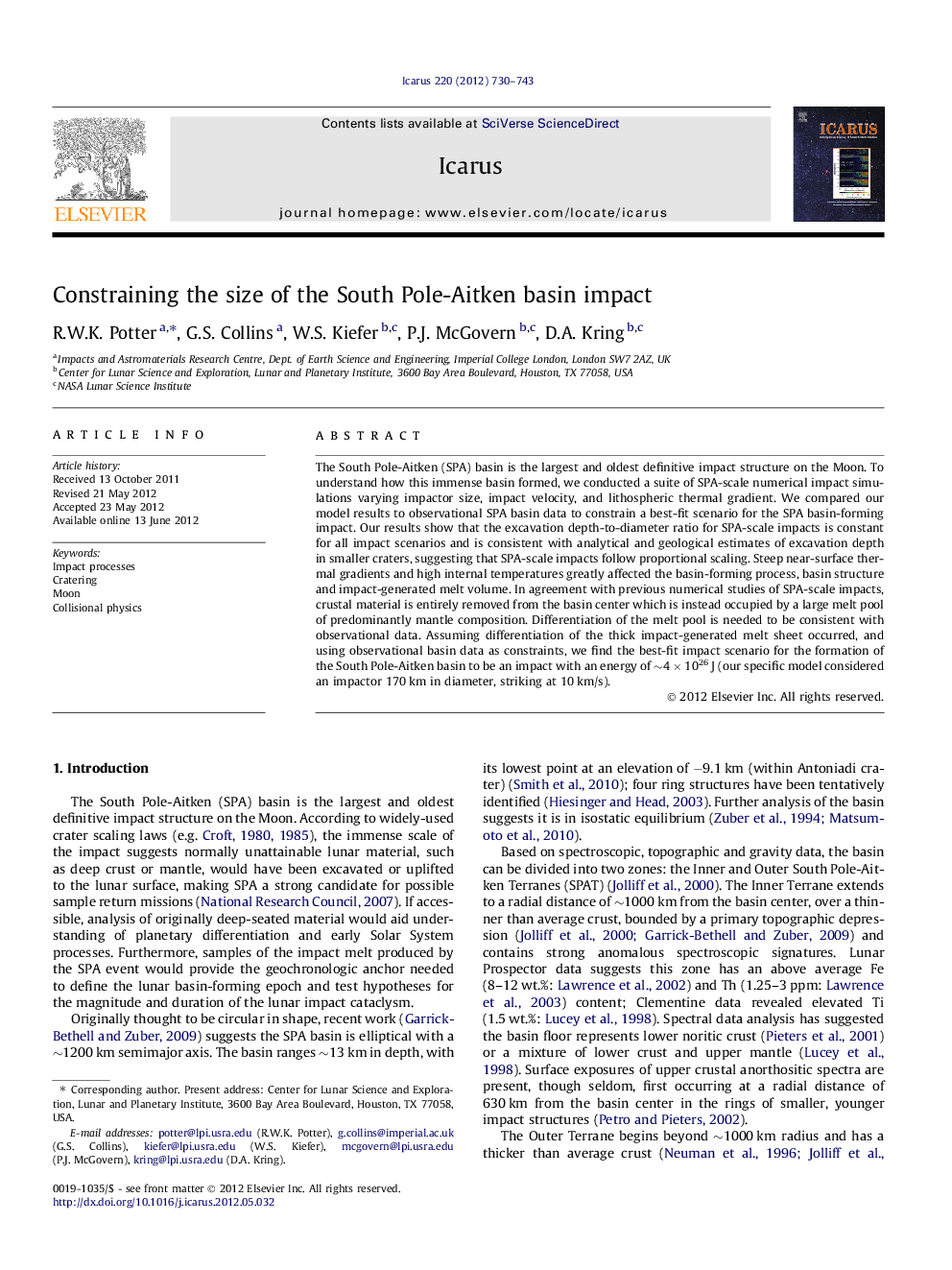| Article ID | Journal | Published Year | Pages | File Type |
|---|---|---|---|---|
| 1773439 | Icarus | 2012 | 14 Pages |
The South Pole-Aitken (SPA) basin is the largest and oldest definitive impact structure on the Moon. To understand how this immense basin formed, we conducted a suite of SPA-scale numerical impact simulations varying impactor size, impact velocity, and lithospheric thermal gradient. We compared our model results to observational SPA basin data to constrain a best-fit scenario for the SPA basin-forming impact. Our results show that the excavation depth-to-diameter ratio for SPA-scale impacts is constant for all impact scenarios and is consistent with analytical and geological estimates of excavation depth in smaller craters, suggesting that SPA-scale impacts follow proportional scaling. Steep near-surface thermal gradients and high internal temperatures greatly affected the basin-forming process, basin structure and impact-generated melt volume. In agreement with previous numerical studies of SPA-scale impacts, crustal material is entirely removed from the basin center which is instead occupied by a large melt pool of predominantly mantle composition. Differentiation of the melt pool is needed to be consistent with observational data. Assuming differentiation of the thick impact-generated melt sheet occurred, and using observational basin data as constraints, we find the best-fit impact scenario for the formation of the South Pole-Aitken basin to be an impact with an energy of ∼4 × 1026 J (our specific model considered an impactor 170 km in diameter, striking at 10 km/s).
► Numerical models of South Pole-Aitken basin-sized impacts. ► Model results compared to South Pole-Aitken basin geochemical and gravity data. ► Comparisons used to constrain an impact scenario for South Pole-Aitken basin. ► South Pole-Aitken basin formed by an impact with magnitude ∼4 × 1026 J.
